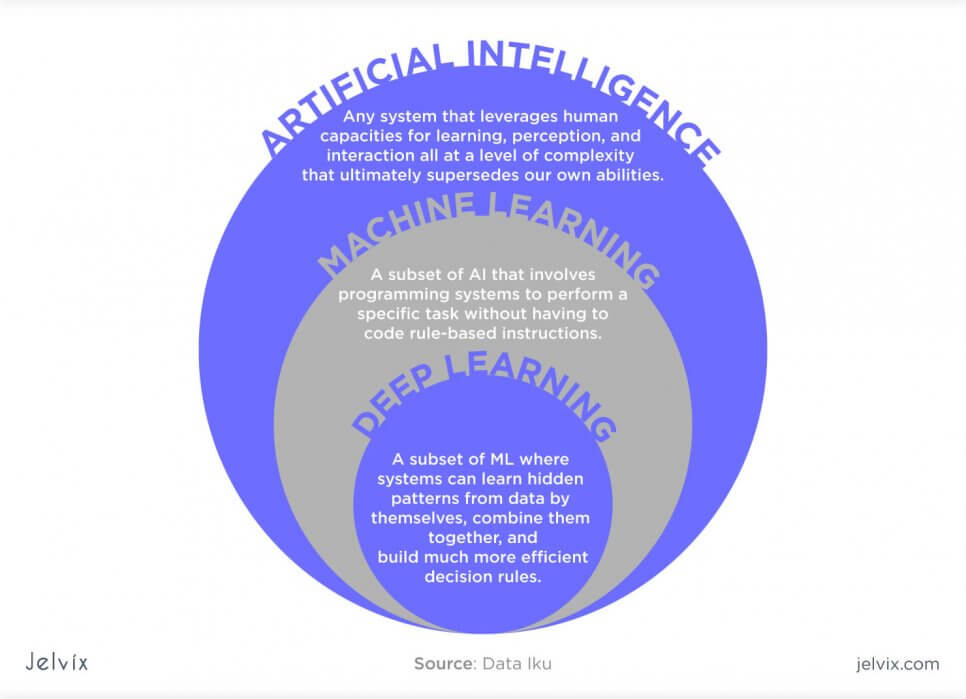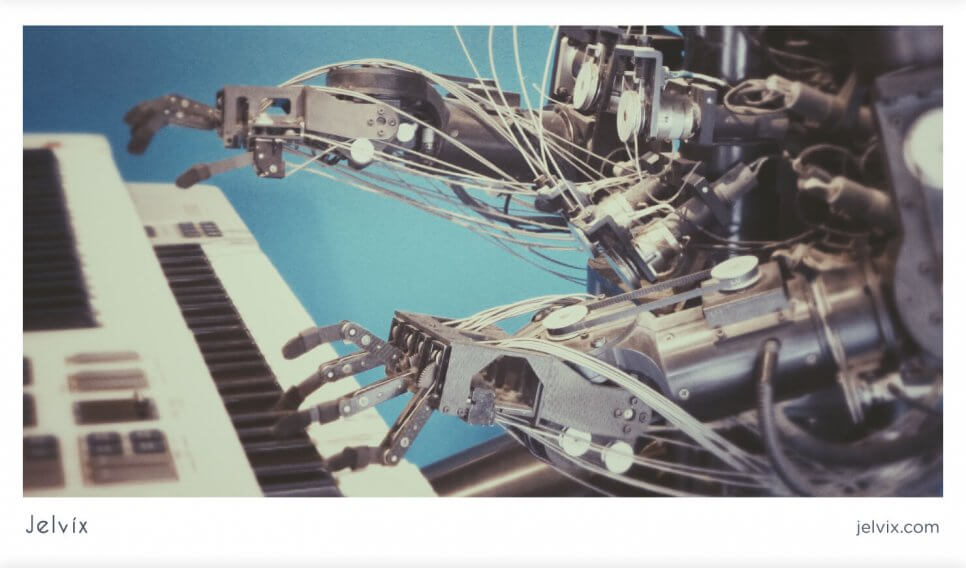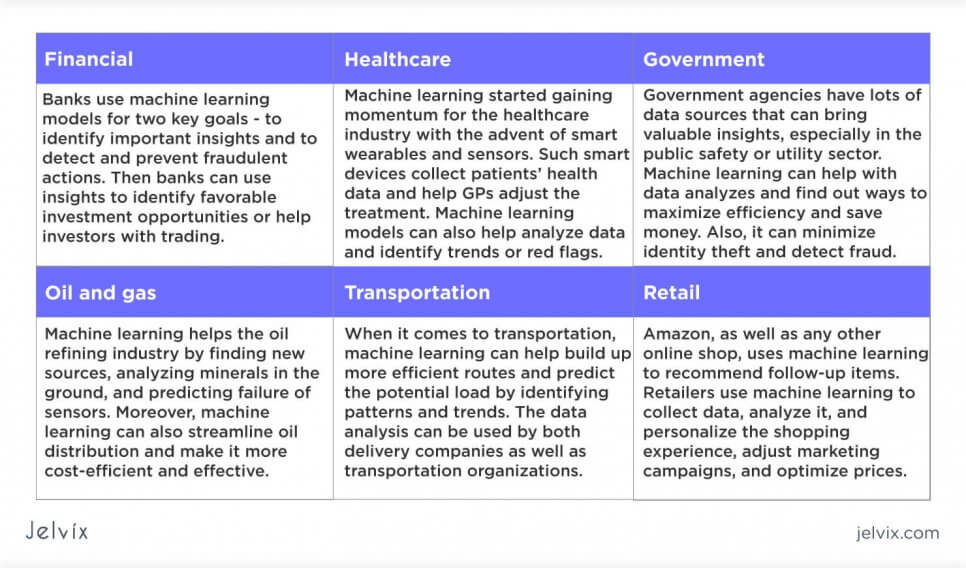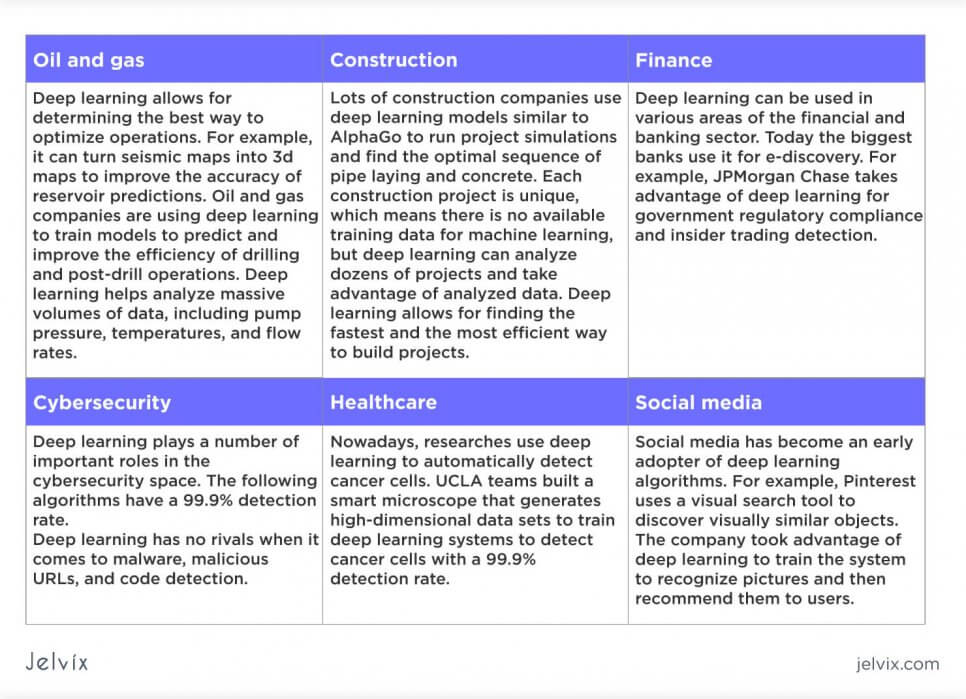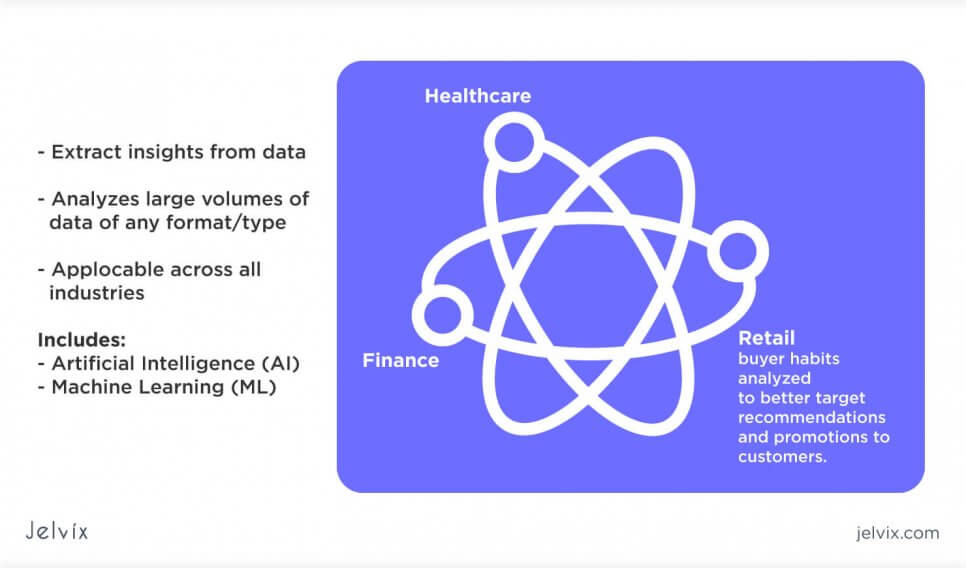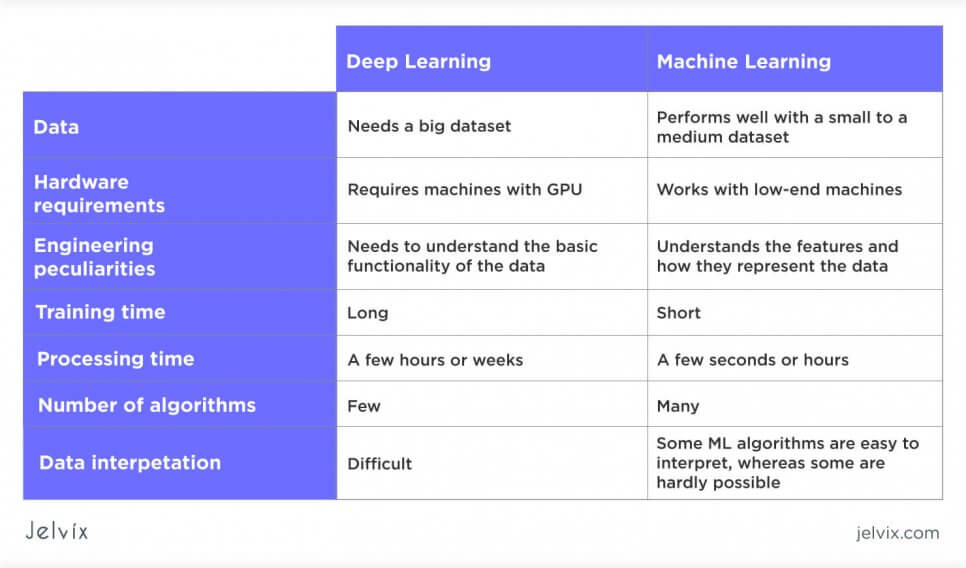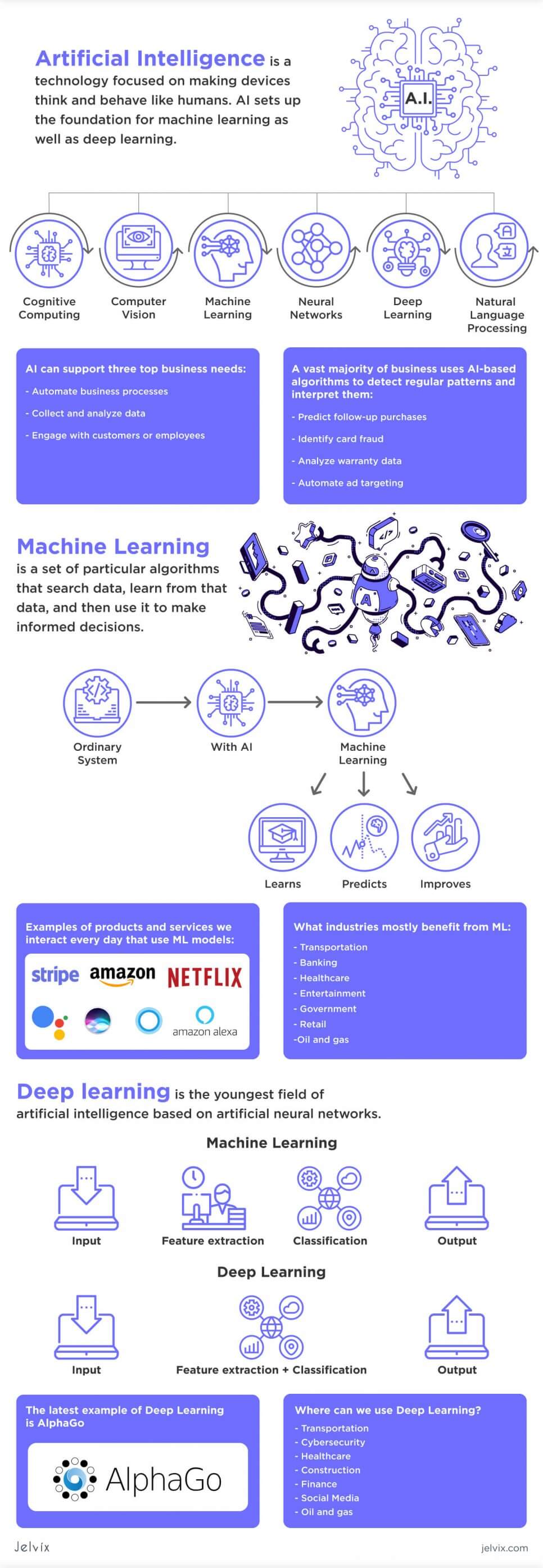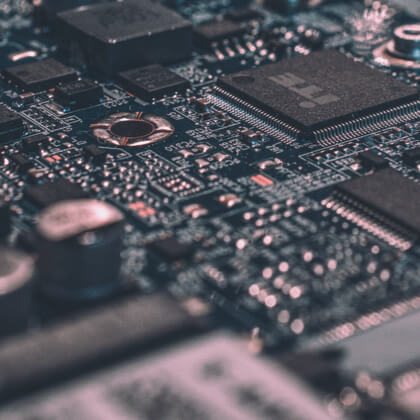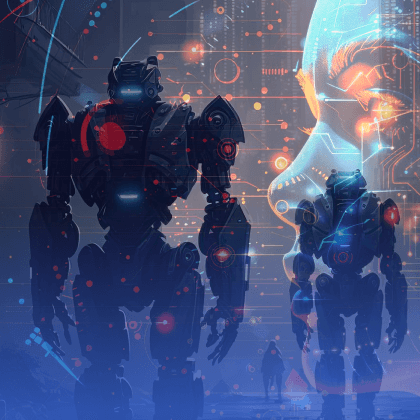Modern technologies make our life more comfortable, and you probably have no idea what technologies stand behind that. Have you ever thought of how fridges adjust temp themselves or how Siri works?
Cell phones, houseware, and cars have definitely become smarter thanks to such deep technologies like AI (artificial intelligence), ML (machine learning), and DL (deep learning). Everyone has probably heard the mentioned technology buzzwords, but very few have a clear understanding of what they mean and how they differ.
All of these terms seem too complicated for non-tech-savvy users. When comparing deep learning vs machine learning vs AI, it’s a real challenge to spot a difference. AI, deep learning, and machine learning are cut from the same cloth, but they mean entirely different things. It’s time to compare them and find out how deep learning vs machine learning vs AI differ.
What is Artificial Intelligence?
A robot will probably be the first thing to cross your mind when you hear about AI. The reason for that might be all the Hollywood movies like ‘Transformers’ or ‘Chappie’ that represent AI as human-like robots taking over the world. However, nowadays, AI isn’t so smart or terrifying as in movies. Instead, AI has been widely used in a vast array of industries like retail, education, healthcare, and many more.
And yet, there is no clear definition as to what AI means. John McCarthy, the godfather of AI, defined it as “the science of making intelligent machines”. Here’re some other popular definitions of Artificial Intelligence:
- A computer science dealing with the recreation of intelligent human-like behavior in machines.
- Machine’s ability to simulate human behavior.
- An intelligent computer program able to perform human-like tasks, such as recognizing speech, perceiving pictures, making decisions, and translating between languages.
The main purpose of artificial intelligence is to make machines as intelligent as humans. It focuses on making devices think and behave like humans. AI-powered devices are trained to solve problems and learn. Robots and self-driving cars are the best examples of AI in the modern world.
The truth is that we cannot adequately impart human intelligence to machines. Still, machines cannot think, work, and function like humans. Recently, the world has met the first social humanoid robot named Sophia, who can act and even think like a human. She can talk, make jokes and decisions. Sophia is the brightest example of AI-powered robots. Check out her last visit to Jimmy’s Showbotics:
Three types of Artificial Intelligence
Businesses need to look at artificial intelligence through the lens of business capabilities, but not technologies. In other words, while looking for examples of AI vs Machine Learning vs deep learning, we need to focus on what artificial intelligence can do for your business.
Artificial intelligence can support three top business needs:
- Automate business processes
- Collect and analyze data
- Engage with customers or employees
Artificial Intelligence for business automation
Nowadays, most of the back-office administrative and financial activities can be easily automated thanks to robotic process automation solutions or RPA. RPA can streamline the following processes:
- Transfer data from call center system or emails into a customer management solution like Salesforce
- Replace lost ATM or credit cards
- Extract provisions by reading contracts and other legal papers using natural language processing
Artificial Intelligence for data collection and analysis
A vast majority of businesses use AI-based algorithms (to be more exact, machine learning models) to detect and interpret regular patterns:
- Predict follow-up purchases
- Identify card fraud
- Analyze warranty data
- Automate ad targeting
The insights collected by AI-powered systems differ from traditional analytics in three ways – they can deal with large datasets, models get better and better insights by analyzing dozens of datasets, and they provide more detailed data insights.
Artificial Intelligence for customer engagement
Natural language processing chatbots, smart agents, and machine learning models power up lots of modern businesses. Some companies use AI solutions for employees (for example, Becton, a US medical technology company, uses Amelia as an internal help-desk agent), whereas others take advantage of AI technologies to provide a better service for their customers (for example, SEBank, a Swedish bank, uses Amelia for customer support). Utilizing artificial intelligence capacities, companies can easily solve a vast array of issues:
- 24/7 intelligent agents solve a growing array of issues from password request to technical support
- Internal chatbots answer the most common employee questions on various topics, including employee benefits, HR policy, and IT
- Service and product recommendation solutions help retailers to provide a more personalized experience, drive engagement rates, and grow sales
- Insurance recommendation systems provides more customized care plans
Artificial Intelligence works with:
- General intelligence
- Learning
- Nature language processing
- Knowledge representation
- Planning
- Reasoning
- Problem solving
- Social intelligence
What is Machine Learning?
Artificial intelligence sets up the foundation for both machine learning and deep learning. In other words, there would neither be machine learning nor deep learning without AI. So let’s find out what machine learning is.
Machine learning is a set of particular algorithms that search data, learn from it, and then use it to make informed decisions. For instance, online music streaming services like YouTube Music or Apple Music use ML-based algorithms to decide which new song or singer to recommend.
The main idea of ML is that you compile a data set, feed it to ML algorithms to learn, and then ML algorithms make predictions or recommendations based on the data analyzed. In other words, such algorithms are coded by hand, and they cannot learn. When such algorithms receive various inputs, they always respond in the same way.
ML algorithms have no rivals when it comes to detecting abnormalities. They search for the events that significantly vary from others. ML is widely used in the banking sector. For example, Stripe uses ML-based anomaly detection to identify any fraudulent actions. And Stripe’s Radar does work well.
Radar is an integral part of Stripe, and it works right out of the box. It collects data relevant to fraud from all of the Stripe’s businesses. And since fraud patterns change, businesses need to label payments and help Radar train to detect abnormalities.
The system analyzes every payment made across billions of Stripe users to build up a behavioral pattern. The card’s country of origin, the IP address the payment was made from, and the email domain provide valuable insights when predicting fraudulent actions.
Not only Stripe takes advantage of machine learning. Many of the products we use on a daily basis also use machine learning models.
- Apple, Google, Amazon, and Microsoft power up their voice assistants (Siri, Alexa, Cortana, and Google Assistant) with machine learning models. They’re used for lots of cases, from text prediction to app recommendation.
- Amazon takes advantage of machine learning to recommend items to buyers. Amazon’s recommendation engine is based on what people have bought after purchasing a particular item. Amazon can recommend up to four items to facilitate a follow-up purchase.
- Facebook and Google use machine learning models to adjust what ads to show you based on your last search query or newsfeed.
What businesses can benefit from utilizing Machine Learning?
Scale your business quickly and operate with a higher impact. Jelvix Machine Learning development services and Artificial Intelligence development help companies drive performance, automate tasks, and increase revenue.
What is Deep Learning?
While analyzing the differences between machine learning and deep learning with examples, we can see that they have only one thing in common – they’re based on artificial intelligence principles.
Deep learning is the youngest field of artificial intelligence based on artificial neural networks. Still, deep learning can be seen as a part of machine learning since it also uses data to learn how to solve problems or act in a particular situation. When comparing machine learning vs deep learning, it’s vital to point out that the main difference between them is self-learning.
Although people often think of machine learning and deep learning as the same, these systems have completely different capabilities. Deep learning combines computing power and neural networks, whereas machine learning takes advantage of algorithms.
If we take a closer look at neural networks, we will see that they are based on the biology of our brains. Consequently, the network imitates the connections between the brain neurons. However, unlike a human brain, where all neurons are connected within a particular physical space, neural networks have detached layers, interconnections, and several directions for data reproduction. In other words, neural networks imitate the human decision-making process and can learn, unlike standard machine learning models.
Nowadays, researchers use deep learning for a vast array of things, starting from simple pattern recognition to medical diagnoses and automatic language translation. While searching for the best examples of ai vs machine learning vs deep learning, we would offer you Google’s AlphaGo.
AlphaGo is the latest example of deep learning. It’s the first computer program that has learned to play the board game named ‘Go’ and won it. ‘Go’ isn’t one of the easy board games you would play with your kids. It needs sharp intellect and intuition. And you might not believe it, but AlphaGo played the first match with Mr. Fan Hui, the three-time European Champion, and won it with a score of 5-0!
Following its success, Google launched AlphaGo Zero. Unlike AlphaGo, AlphaGo Zero doesn’t need to play thousands of games with professional players and amateurs. It can learn by playing against itself as every game is completely different from the previous one. AlphaGo Zero develops unconventional strategies and creates new moves that have beaten the World ‘Go’ Champions in a few moves.
Where can we use Deep Learning?
AI vs Machine Learning vs Deep Learning
All three notions are somehow interconnected and deal with massive amounts of data. Artificial intelligence gives rise to machine learning and deep learning. The era of big data and modern technologies facilitate businesses to collect, analyze, and use data. All these factors created a new discipline – Data Science, which occurred on the overlap between AI vs ML vs DL.
Data science is everything on using data for solving analytical problems. Its primary goal is to identify hidden patterns and help businesses grow their profits and enhance their productivity.
Before collected data can be used by data scientists and utilized for training of ML or DL models, it needs to go through 6 main procedures:
- Data discovery
- Preparation
- Planning
- Building
- Communicating results
- Operationalizing
Data science isn’t used only for machine learning and deep learning model training. It deals with everything from data collection to data manipulation. Data scientists help businesses make the right decision based on the collected information.
Key difference Machine Learning vs Deep Learning in tabular form
Before powering your business with a machine learning or deep learning system, you need to make a comparison of deep learning vs machine learning benefits for your particular business. Need more information on the difference between deep learning and machine learning? Feel free to leave us a message.
Summing up
Artificial intelligence is an all-inclusive term. It mostly refers to the human cognitive ability reproduced by machines. When first introduced, AI systems took advantage of patterns to match and expert systems. Nowadays, AI-powered machines can do a lot more.
Artificial intelligence stands behind both machine learning and deep learning. The core idea of machine learning is that a machine learns from patterns on its own and doesn’t require any human intervention. Consequently, DL has become a real boom in the world of AI since DL-powered machines can learn without using patterns. When there is enough data to learn, DL delivers impressive results for any action, including image recognition and even written translation.
So, what is better when considering machine learning vs AI vs deep learning? There isn’t a right answer if it concerns different business spheres. For example, banks will definitely benefit from machine learning solutions, while the construction industry needs deep learning models.
At Jelvix, our main priority is to develop cutting-edge software solutions to help solve your business problems. Feel free to get in touch to leverage our AI expertise and build ML-powered software solutions for your business from scratch.
Have a project in mind?
Extend your development capacity with the dedicated team of professionals.



